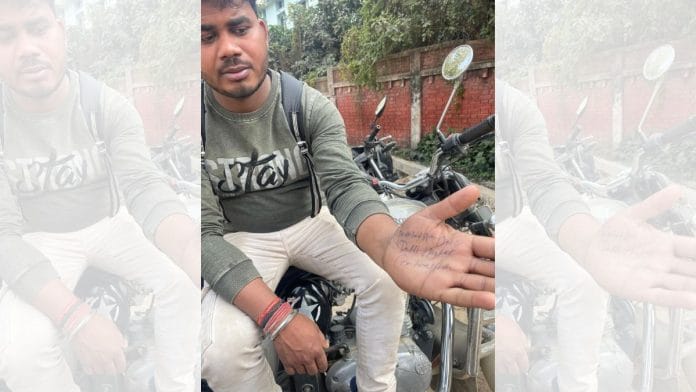Prayagraj: As the search for those missing since the 29 January Maha Kumbh stampede continues into the third day, family members are arriving at the designated mortuaries
The mortuary of Moti Lal Nehru Medical College (MLNMC) is an unremarkable building. Its gates are closed to the public and media.
A dozen police officers stand guard inside, allowing entry only to the relatives of the deceased who have come to identify the bodies.
Abhinandan Gupta, 22, was part of a group of 10 people visiting the Maha Kumbh Mela from Sitamarhi, Bihar.
He lost his grandmother during the stampede that occurred in the Sangam area in the early hours of 29 January.
He first went to the lost and found centres set up on the Mela grounds.
There, they gave him a list of places he could check— Swaroop Rani Nehru Hospital, Tej Bahadur Sapru Hospital, and MLNMC.
Gupta checked the first two hospitals, only to find his grandmother’s name absent from any of the patient lists.

“I even tried filing an FIR (First Information Report) in Sector 21 at the Mela,” Gupta told ThePrint. “They just wrote something down in a register and didn’t give me any documentation.”
He was initially not even allowed inside the mortuary to identify whether any of the reportedly 15 bodies was his grandmother’s.
That was until an Allahabad High Court lawyer stepped in.
Govind Ji Rai, after hearing about the stampede, decided to visit the mortuary himself. He took the affairs into his own hands, convincing the police on duty to let Gupta inside.
“Whatever has happened, has happened,” Rai told police officers. “We should be helping each other during these times. He has his Aadhaar card with him, let him inside so he can identify the bodies.”
The police apologised for the confusion. Gupta did not find his grandmother at the mortuary.
Also Read: I saw a Maha Kumbh stampede in the making during the first Shahi Snan
Relatives of the missing arrive in Prayagraj

Bikram Kumar, from Jharkhand, arrived in Prayagraj on 31 January in search of his mother.
“She got separated from her group on 29 January at 3 am,” said Kumar. “Her group tried finding her but then went back to Jharkhand, so I came this morning.”
Kumar went to a police camp outside Prayagraj Junction railway station and filed a missing persons application.
He also visited a medical centre where 14 photos of missing people were displayed—his mother was not among them.
“The police have been very helpful in providing me with information and supporting me,” Kumar told ThePrint. “A journalist even walked 15 kilometres with me to help me find her.”
Kumar looked visibly upset as he set off from the mortuary.
He was among dozens of people who turned up at the MLNMC mortuary on 31 January between 1 and 3 pm.
Locals join in on the search
At Swaroop Rani Nehru Hospital, Prayagraj local Rahul Sonkar, 30, was waiting at the reception desk for information about a missing person.
“A lady from Assam lost her mother,” Sonkar told ThePrint. “She was walking past my house, asking for directions to the Sangam.”
Sonkar told the woman that the road to the Sangam had been closed because of the stampede, and that is when he learned she was looking for her lost mother.
“I told her to rest at my house while I go out and find her mother,” said Sonkar.
Sonkar visited all the major local hospitals, including sectors 16 and 18 at the Mela, where temporary hospitals have been set up.
He planned to go to Jhusi next, the location of another stampede that took place a few hours after the first one at the Sangam on 29 January.
“I have helped families from other areas too—Punya (West Bengal), Agra, Kanpur (Uttar Pradesh), and Jammu,” said Sonkar.
(Edited by Radifah Kabir)
Also Read: Inside Elite Kumbh—no crowds, no chaos, only VIP Sangam, 5-star spirituality






